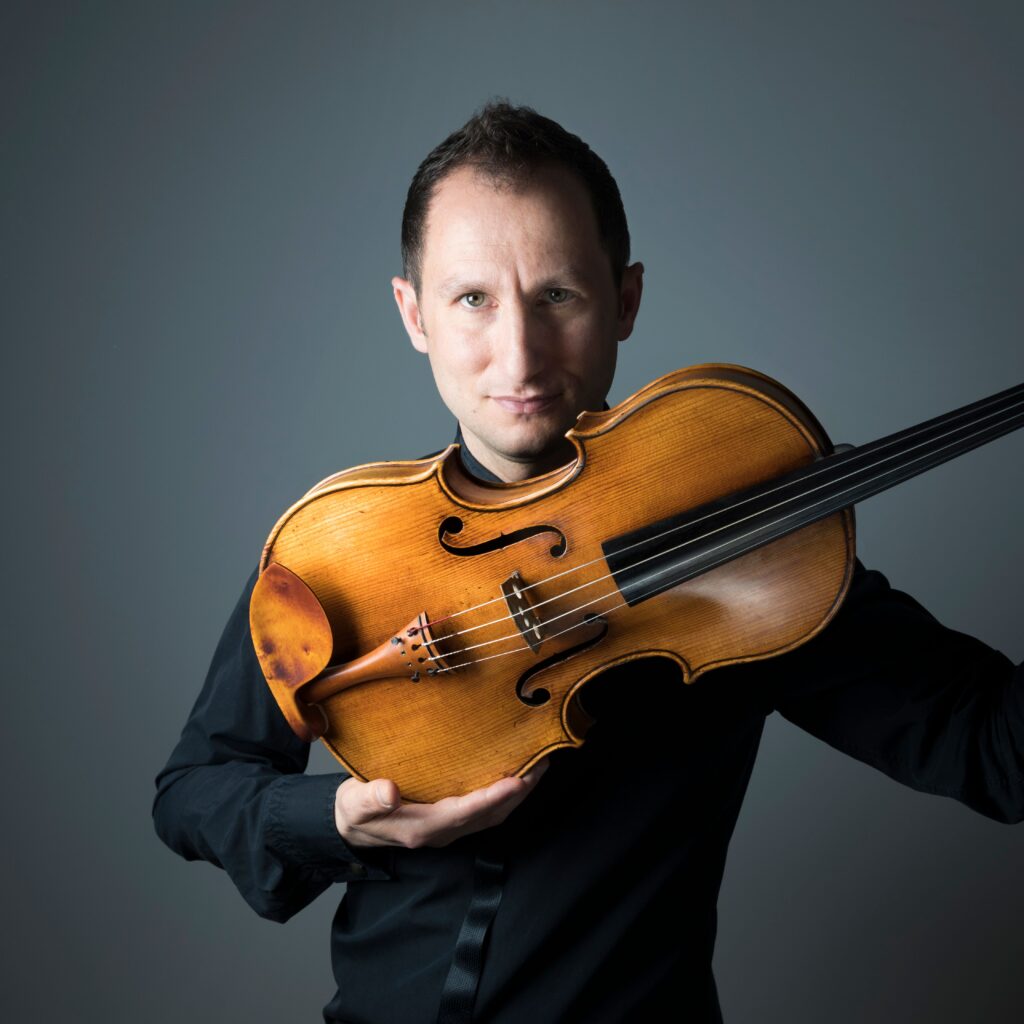A mesmerizing concerto and memorable Mozart from van Zweden, Philharmonic

As Jaap van Zweden’s tenure as music director of the New York Philharmonic winds down to the final few concerts, a question remains unresolved: just what this partnership would have been without the pandemic interruption and van Zweden’s subsequent decision to leave New York.
Conductor and orchestra never really had enough time to define an aesthetic core and purpose and a distinct style in the redone David Geffen Hall. Recent concerts, especially Thursday night’s opener for the current subscription program, only add to this mystery.
The unusual and imaginative program of Sofia Gubaidulina’s Concerto for Viola and Orchestra, with soloist Antoine Tamestit, and Mozart’s Requiem and Ave Verum Corpus— seemed to provide a window into van Zweden’s musical thinking. And the sheer excellence of the playing was a taste of what might have been.
Gubaidulina’s marvelous concerto was an inspired choice, as was calling on Tamestit, who was making his Philharmonic debut. The piece has a symphonic length of over a half hour, and abstracts the traditional concerto form by not only being in one movement but also keeping a slow pace that concentrates on a succinct amount of material for about two-thirds of its length. A brief stretch of more active, fast-paced, and denser music ensues but the overall shape is a long, steady line, a sharp upward curve, and finishing with a return of the low line.
This work is absolutely gripping because the composer has wonderful control of her materials, and they are great materials: the violist has several solo passages that are like anti-cadenzas, putting a premium on feeling and intensity and pure tone production, while the main orchestral music is a minor key motif that rise up and down a third by half and whole steps—a kind of sighing lament that stubbornly responds to each question from the viola.
Tamestit is a masterful player, producing a tone full of substance and weight at any volume, and with the kind of control of his instrument that makes for myriad expressive details. His playing was meaningful and deeply involved in the music, and van Zweden was alert to each detail of tempo and dynamics. The Philharmonic strings were soft and velvety, and one relished the precise details like the voluptuous bass flute part that appears at the beginning and end of the piece.
This is a great anti-cliché concerto, given a fantastic performance. There were some in the audience who fit the cliché of the concertgoer seeking nothing more than prestige, with their ringing phones boorishly playing the samba and people getting up and leaving. But the majority responded with a massive ovation and called Tamestit back for more. He obliged by interpolating a Ukrainian lullaby—played with singing harmonics—and a bit of Bach’s Violin Partita No. 3.
After intermission, the Requiem (in the standard Süssmayr edition) was perhaps the finest performance one has ever heard from conductor and orchestra together. It was skillful and assured in that everything was coordinated, but it was much more. The pulse and rise and fall of each line had an easy, relaxed confidence, a tremendous musicality and intimate sense of musicians enjoying playing together.
The weight of the interpretation was perfect. With modern instruments, van Zweden kept the sound on the delicate and warm side, letting the weight come through in things like the motion of the harmonies, the counterpoint, and the colorful, passionate singing of Musica Sacra and soprano Amanda Forsythe, mezzo-soprano Cecilia Hall, tenor Nicholas Phan, and bass-baritone Michael Sumuel (in his Philharmonic debut). The orchestra supported the singing with cantabile phrasing.
The soloists were themselves lighter, shining voices, adding to the floating quality of the performance. This was evident throughout, with the feeling that the music was unfolding naturally and organically. The few prominent interpretive touches, like the fast “Dies irae,” came off as just right in the moment and in the way they fit into the larger context of the work.
The one drawback to being so open and transparent with this music is that the gap in quality between what Mozart wrote and what Süssmayr finished was apparent. But that’s the music we have. As an immediate segue, Ave verum corpus was a gorgeous, glowing finish, the luster of Mozart laid on top of the whole evening.
The program will be repeated 8 p.m. Friday and Saturday. nyphil.org